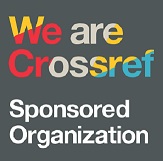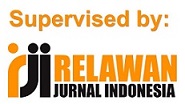ANALISIS PLS-SEM TERHADAP KESIAPAN DIGITAL ORANG TUA SISWA SMAN 2 KABANJAHE DALAM MENGHADAPI ERA INDUSTRI 4.0
Abstract
Keywords
Full Text:
PDF (Bahasa Indonesia)References
Abubakar, R., Rifandi, Muh., Rahmawati, R., & Fatimah, F. (2023). Analisis Faktor-Faktor Penghambat Penyelesaian Studi Mahasiswa Program Studi Matematika Universitas Sulawesi Barat Menggunakan PLS-SEM. Jambura Journal of Probability and Statistics, 4(1), 8–16. https://doi.org/10.34312/jjps.v4i1.19240
Azzahra Shalsabilla. (2023). Analisis kesiapan adopsi teknologi informasi pada penelitian dan publikasi ilmiah mahasiswa menggunakan technology readiness index and adoption model [Skripsi]. Universitas Islam Negeri syarif Hidayatullah Jakarta.
Cohen, J. (1988). Statistical power analysis for the behavioral sciences second edition (2nd ed.). Lawrence Erlbaum Associates.
Dito, S. B., & Pujiastuti, H. (2021). Dampak revolusi industri 4.0 pada sektor pendidikan: Kajian literatur mengenai digital learning pada pendidikan dasar dan menengah. Jurnal Sains Dan Edukasi Sains, 4(2), 59–65. https://doi.org/10.24246/juses.v4i2p59-65
Ghozali Imam. (2021). Structural Equation Modelling dengan Metode Alternatif Partial Least Squares (PLS) (5th ed.). Badan penerbit Undip.
Hair, J. F., Hult, G. T. M., Ringle, C. M., Sarstedt, M., Danks, N. P., & Ray, S. (2021). Partial least squares structural equation modeling (pls-sem) using r. 30.
Khairunisapril, D., Wahyu, M., & Indrianti, N. (2025). Tantangan orang tua dalam mendidik anak di era digital di jalan MT. Haryono lingkungan III Kelurahan Damai Binjai Utara. Journal of Innovative Research, 2, 706–715. https://ziaresearch.or.id/index.php/mesada
Parasuraman, A. (2000). Technology readiness index (Tri): a multiple-item scale to measure readiness to embrace new technologies. 2(4), 307–320. https://doi.org/10.1177/109467050024001
Sarstedt, M., Ringle, C. M., & Hair, J. F. (2021). Partial Least Squares Structural Equation Modeling. In Handbook of Market Research (pp. 1–47). Springer International Publishing. https://doi.org/10.1007/978-3-319-05542-8_15-2
Mahfud, S., & Dwi, R. (2021). Analisis PLS-SEM dengan warppls 7.0 untuk hubungan nonlinear dalam penelitian sosial dan bisnis. (Mitak Clara, Ed.; 2nd ed.). Andi.
Sugiyono. (2013). Metode Penelitian Pendidikan Pendekatan Kuantitatif, Kualitatif dan R&D. Alfabeta.
Suparjan, Wibawa, L., Fauziah, P. Y., & Ismiyani, N. (2024). Assisting students learning at home: parents’ role. In Journal of Education Research (Vol. 5, Issue 1). https://doi.org/https://doi.org/10.37985/jer.v5i1.943
Suwandi, M. A., & Rakuasa, H. (2024). Community participation in education in the digital age in Indonesia. International Journal of Educatio Elementaria and Psychologia, 1(5), 252–259. https://doi.org/10.70177/ijeep.v1i5.1250
Wahyu Fernanda, J., Luthifiana, V., Khoiril Akhyar, M., Agama Islam Negeri Kediri Jl Sunan Ampel No, I., Kota, K., Kediri, K., & Timur, J. (2022). Analisis partial least square structural equation model (PLS-SEM) untuk pemodelan penerimaan sistem jaringan informasi bersama antar sekolah (JIBAS). In J Statistika (Vol. 15, Issue 2). www.unipasby.ac.id
Yuli Alam, & M Bambang Purwanto. (2025). Kesiapan sumber daya manusia dalam menghadapi implementasi teknologi digital. Jurnal Ekonomi, Manajemen Pariwisata dan Perhotelan, 4(3), 774–786. https://doi.org/https://doi.org/10.55606/jempper.v4i3.5223
DOI: https://doi.org/10.30743/mes.v11i1.12111
Refbacks
- There are currently no refbacks.

.png)


